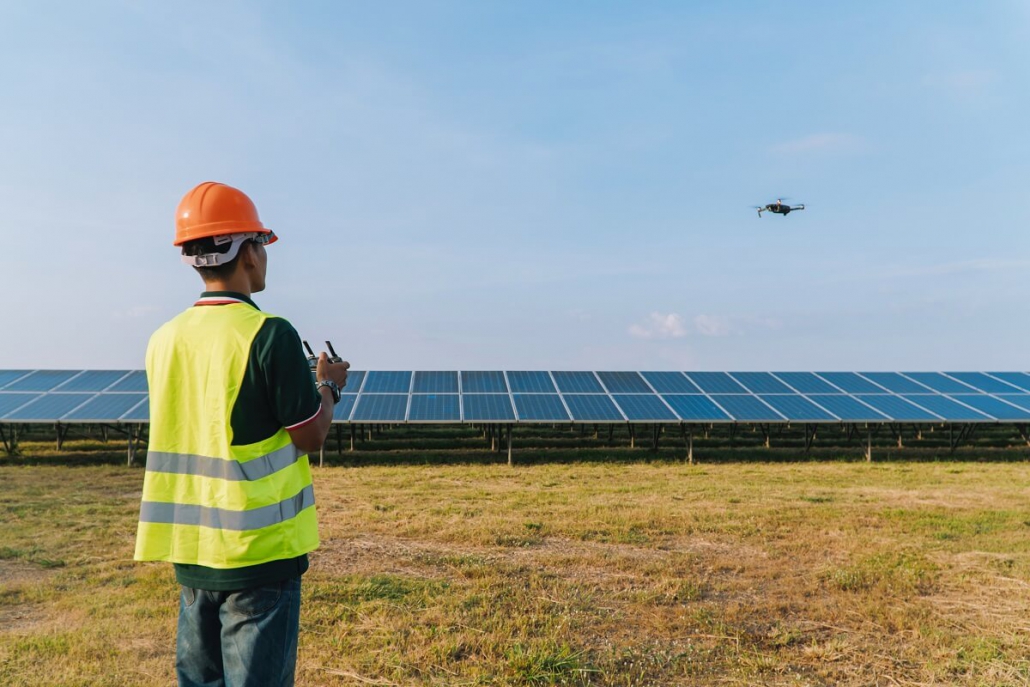
As the world continues its shift toward renewable energy, solar power has become a critical part of reducing reliance on fossil fuels. Solar energy is efficient, sustainable, and scalable, but maintaining solar panels to ensure peak performance is no small feat, especially when installations cover vast areas like solar farms. Traditionally drone solar panel inspection , solar panel inspections required manual labor and extensive resources, leading to inefficiencies and increased costs. However, with the introduction of drone technology, solar panel inspections have taken a leap forward, providing faster, safer, and more cost-effective solutions.
This article will explore how drones are transforming solar panel inspections, the benefits of drone-based systems, and the future potential of this rapidly growing technology in maintaining solar energy infrastructure.
Why Solar panel Inspections Matter
Solar panels are exposed to the elements year-round, which means they are vulnerable to environmental factors that can decrease their efficiency. Dust, dirt, debris, weathering, and other contaminants can block sunlight from reaching the photovoltaic cells. Additionally, mechanical issues such as microcracks, broken cells, and poor wiring connections may arise over time. These problems can reduce energy output and the overall efficiency of the solar array, leading to revenue losses for solar farm operators and residential solar panel owners alike.
Regular inspections are essential to ensure that the solar panels are functioning optimally and producing the maximum amount of electricity. Identifying issues early can help prevent more extensive and costly damage, extending the lifespan of the installation. While manual inspections were the norm in the past, they were slow, costly, and fraught with human error.
The Evolution of Traditional Solar panel Inspections
Before drones became mainstream, the inspection process was labor-intensive and often required technicians to physically access the solar panels. This meant using ladders, scaffolding, or cherry pickers to reach rooftop installations or traversing large solar farms on foot. Inspectors had to rely on handheld tools like thermal cameras to detect issues, such as cracks or malfunctioning cells, and visually scan each panel, which could be a painstaking process.
Some key challenges of traditional inspections include:
Time and Labor Intensive: Large solar farms can span thousands of acres. Manually inspecting each panel across such vast areas requires significant time and manpower, often causing operational downtime.
High Costs: With the need for multiple technicians, equipment, and time to complete the inspection, the costs can quickly add up, particularly for commercial solar farms. This financial burden is multiplied by the fact that any downtime caused by inspections results in reduced energy generation.
Safety Concerns: Rooftop solar panels pose risks to technicians, especially when working at heights or on uneven terrain. In extreme weather conditions or remote areas, these safety risks are exacerbated.
Inconsistent Results: Human error in manual inspections is a major drawback. Technicians can miss small but significant issues like microcracks, debris, or temperature inconsistencies that could develop into more serious problems over time.
Drone Technology: Revolutionizing Solar panel Inspections
Drones, or unmanned aerial vehicles (UAVs), have brought a much-needed solution to the challenges of solar panel inspections. Equipped with advanced imaging technology, drones offer an efficient, non-invasive way to inspect solar panels quickly and accurately. They can capture high-resolution optical images and thermal data, allowing operators to detect even the smallest issues with ease.
How Drone-Based Inspections Work
Flight Path Programming: Before launching a drone inspection, operators create a pre-programmed flight path that covers the entire solar farm. The drone flies autonomously, systematically covering all areas to ensure no panel is left uninspected.
Data Collection: As the drone flies over the solar panels, it collects high-resolution images and thermal data using onboard cameras and sensors. These sensors can detect surface-level damage such as cracks, dirt, or debris buildup, as well as underlying issues like hot spots or poor wiring that could affect the panel’s performance.
Real-Time Analysis: The data collected during the flight is often analyzed in real-time by AI-powered software, which flags anomalies and provides insights into potential problem areas. Drones equipped with AI can differentiate between minor issues and more critical defects, streamlining the decision-making process for maintenance crews.
Report Generation: Once the inspection is complete, a comprehensive report is generated that outlines the condition of each panel and highlights any issues that require attention. This helps maintenance teams prioritize repairs and address problems before they escalate.
Benefits of Drone Inspections for Solar panels
Speed and Efficiency: Drones can inspect large-scale solar farms in a fraction of the time it would take human inspectors. For example, what might take a team of technicians days to complete, a drone can finish in just a few hours. This speed allows operators to minimize downtime and maximize energy production.
Cost-Effective: While drone systems require an initial investment, they save costs in the long run by reducing the need for manual labor, minimizing inspection time, and preventing costly repairs through early detection. By allowing continuous operation during inspections, drones also help operators avoid revenue loss due to shutdowns.
Enhanced Precision and Accuracy: Drones equipped with thermal imaging cameras and AI-driven software can detect even the smallest defects, such as microcracks or hot spots, that could otherwise go unnoticed in manual inspections. This level of precision helps prevent energy losses and optimizes overall system performance.
Improved Safety: With drones handling the inspection process, technicians are no longer required to climb on rooftops or work in hazardous conditions. This significantly reduces the risk of accidents, making solar panel maintenance safer for everyone involved.
Complete Coverage: Drones can easily access hard-to-reach areas, such as elevated panels on rooftops or those located in remote areas. This ensures that every panel is inspected thoroughly, something that can be difficult to achieve with manual inspections.
The future of Drone Inspections in Solar energy
As drone technology continues to evolve, we can expect even more advanced systems to emerge for solar panel inspections. Future drones may feature longer battery life, better AI-powered diagnostic tools, and autonomous capabilities, allowing for even more efficient, hands-free operations. The integration of drones with solar farm monitoring software could enable real-time inspections and predictive maintenance, where potential issues are detected before they impact performance.
Autonomous drones, capable of self-charging through solar power, may also become standard in large solar farms, enabling continuous, 24/7 monitoring without the need for human intervention. These developments will make solar energy systems more reliable, efficient, and cost-effective than ever before.
Conclusion
Drone technology has revolutionized the way solar panel inspections are conducted, offering unparalleled speed, accuracy, and cost savings. By eliminating the need for manual labor, reducing safety risks, and ensuring comprehensive inspections, drones have become an essential tool for solar farm operators and residential installers alike. As the renewable energy sector continues to grow, the role of drones in maintaining solar panel efficiency will only expand, helping drive the future of clean, sustainable energy forward
